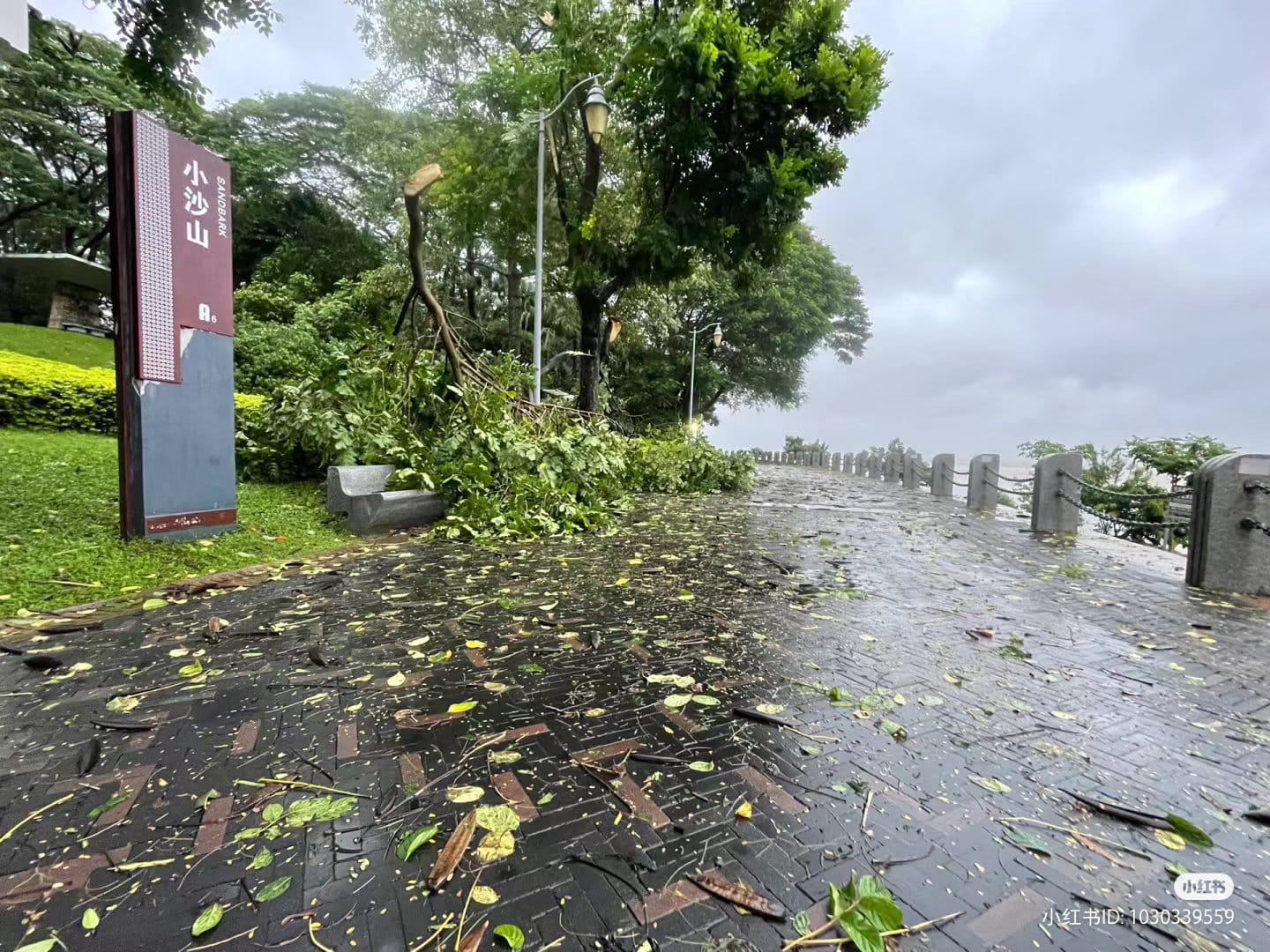Super Typhoon Saola has significantly weakened after making a forceful landfall on the southern coast of China’s Guangdong province, following its devastating rampage through Hong Kong. The once-feared storm, boasting winds exceeding 200 kilometers per hour (125 miles per hour), unleashed chaos, resulting in at least one fatality and widespread destruction, as torrential rains triggered severe flooding in several regions. This report delves into the impact of Typhoon Saola, the precautionary measures taken, and its subsequent weakening.
Unrelenting Force of Saola
As Typhoon Saola bore down on China’s coast, it unleashed its full fury upon the densely populated regions of Shenzhen, Hong Kong, and Macau. The relentless storm left a trail of devastation in its wake, uprooting trees, causing extensive power outages, and inundating streets with floodwaters. Authorities were compelled to take swift action, suspending hundreds of flights, shuttering businesses, and closing schools, affecting the lives of countless residents.
Evacuations and Precautionary Measures
Recognizing the gravity of the impending disaster, Hong Kong and the neighboring provinces of Guangdong and Fujian made the tough call to evacuate approximately 900,000 residents from vulnerable areas. These proactive measures aimed to safeguard lives in the face of Saola’s imminent onslaught. In Hong Kong, the highest hurricane storm signal of 10 was issued, creating a sense of urgency among residents to prepare for the tempest. Although the storm veered away from Hong Kong, the aftermath of fallen trees and flooding continued to pose a significant challenge.
Saola’s Weakening and Lingering Threat
With the storm’s landfall in Guangdong’s Zhuhai city, the situation began to change. Saola’s ferocity diminished, with its once-mighty winds slowing to around 160 kilometers per hour (99 miles per hour). As the typhoon continued its journey along China’s southern coastline, it was downgraded, offering a glimmer of hope to the battered region. Nevertheless, Chinese authorities maintained vigilance, emphasizing the persistent danger posed by strong winds and heavy rains.
Despite Saola’s weakening, the public was advised to remain indoors, demonstrating a commitment to safety. Fallen trees and signs strewn across Hong Kong’s roads served as a stark reminder of the havoc wreaked by the super typhoon. In Macau, the world’s premier gambling hub, casinos cautiously reopened their doors after a night of closure.
As Super Typhoon Saola weakens and moves further along China’s southern coastline, the region remains on high alert. The storm’s initial onslaught in Hong Kong and subsequent landfall in Guangdong have left a lasting impact, with communities grappling with the aftermath of destruction and flooding. While the worst may be over, vigilance is essential, as the persistent threat of strong winds and heavy rains continues to loom. As the affected areas embark on the path to recovery, the resilience of the communities remains a testament to their determination to weather the storm’s challenges.
















